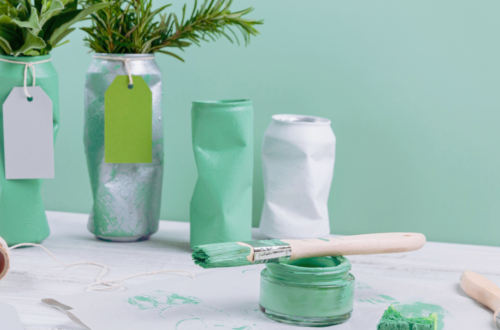Doing laundry may not be the most exciting chore, but with our 10 tips, we promise it will become a breeze. No more ruined clothes or endless cycles of wash-dry-repeat.
We’ve got you covered from sorting your clothes to removing tough stains and everything in between. Get ready to say goodbye to laundry day dread and hello to fresh, clean clothes that make you feel confident and comfortable all week long!
Tip 1: Read the Care Labels
The care label on your clothing is there for a reason- to help you keep your clothes looking their best! These tips will help you get the most out of your clothing and keep them looking great.
Read the care label before washing or wearing your clothing. This will help you know what kinds of treatments are best for the fabric.
Be sure to follow the instructions on the care label. This will help ensure that your clothes last longer and stay looking their best.
If you’re not sure about something on the care label, ask a sales associate or customer service representative for help. They can usually offer guidance on how to treat different types of fabrics.
Tip 2: Sort Your Clothes
When you sort your clothes, you make laundry day much easier for yourself. By separating your clothes into different piles – darks, lights, delicates, etc. – you can ensure that each item is washed in the correct cycle and with the appropriate detergent. This will not only prolong the life of your clothes but also save you time and energy on laundry day.
Tip 3: Pre-Treat Stains
If you’ve got a tough stain on your clothing, it’s important to pretreat it before throwing it in the wash. There are a few different ways you can pretreat a stain, depending on what type of stain it is.
For example, if you’ve got a greasy stain, you can pretreat it with dish soap or laundry detergent. If the stain is particularly stubborn, you can also try using vinegar or rubbing alcohol.
If you’ve got a blood stain, you’ll want to pretreat it with cold water first. Then apply laundry detergent or hydrogen peroxide. You can also try using salt to help draw the blood out of the fabric.
If you’ve got an ink stain, your best bet is to pretreat it with rubbing alcohol. You can also try using hairspray or nail polish remover. But be sure to test these on an inconspicuous area of the fabric first to make sure they won’t damage it.
Tip 4: Choose the Right Detergent
When it comes to laundry, choosing the right detergent is key. There are a variety of detergents on the market, so it can be hard to know which one is right for you.
Different fabrics require different types of detergent. For example, delicate fabrics like silk or wool will need a gentler detergent than something like denim or cotton. Also, if you have sensitive skin or any allergies, be sure to choose a hypoallergenic or gentle detergent.
Different colours also require different types of detergent. For example, whites will need a bleach-based detergent, while colours will need a colour-safe option.
The amount of laundry you’re doing will determine how much detergent you need to use. A small load will need less than a large load. By keeping these things in mind, you can narrow down your choices and find the perfect detergent for your needs!
Tip 5: Using Fabric Softener Correctly
If you want to get the most out of your fabric softener, there are a few things you should keep in mind. First, always follow the manufacturer’s instructions on how to use the product.
Second, fabric softener should be used after your clothes have been washed and rinsed. Third, make sure to add fabric softener to the final rinse cycle of your washing machine.
And fourth, don’t overdo it. Too much fabric softener can make your clothes feel stiff and uncomfortable.
Tip 6: Use the Right Water Temperature
One of the most important things you can do to ensure your clothes are getting clean is to use water that is the right temperature. Hot water is great for getting rid of dirt and stains, but it can also be damaging to delicate fabrics. If you’re not sure what temperature to use, check the care label on your clothing.
Tip 7: Use a Stain Remover Soak or Spray
If you’ve ever dealt with a tough stain, you know how frustrating it can be. Before you throw in the towel, try using a stain remover soak or spray.
To use a soak, simply add the product to a basin of warm water and let the stained item soak for the recommended amount of time. For best results, agitate the water occasionally to help loosen the stain.
If you’re short on time or dealing with a delicate item, opt for a spray instead. Be sure to thoroughly saturate the stained area and let the product work its magic for a few minutes before laundering as usual.
Tip 8: Don’t Overfill Your Machine
If you overfill your washing machine, your clothes won’t get as clean as they could. That’s because there’s not enough room for the water to circulate and the detergent to work its magic. So, don’t be tempted to cram in too many items. Furthermore, keep in mind that overloading your washing machine could put additional stress on the motor. This stress can lead to overheating and premature wear, potentially causing the motor to burn out. In such a case, you would have to look for a reputable company that offers washer repair etobicoke (if that’s where you live).
Tip 9: Choose the Right Cycle for Your Machine
If you want your clothes to come out clean and smell fresh, it is important to choose the right cycle for your machine. The type of fabric, the level of soiling, and the age of the garment all play a role in choosing the best cycle.
For example, if you are washing a delicate silk blouse, you will want to use a gentle cycle with a mild detergent. If you are washing a load of heavily soiled jeans, you will want to use a heavier-duty cycle with a stronger detergent.
Some newer washing machines have special cycles for specific types of fabrics or stains. These can be very helpful in getting your clothes clean while also protecting them from damage.
If you are unsure which cycle to use, consult your washing machine’s manual or contact the manufacturer for guidance. With a little bit of care, you can keep your clothes looking and smelling great wash after wash.
Tip 10: Dry Clothes Properly
One of the most important things you can do to extend the life of your clothes is to dry them properly. Certain clothes last longer when dried in the sun, while others may not. This is important to bear in mind when you do laundry.
Also, over-drying them can cause shrinkage, fading, and fabric damage, especially when it comes to delicate and supple clothing. To avoid these issues, consider air-drying your laundry on a clothesline or drying rack. This method allows clothes to dry gradually, preventing excessive heat exposure.
Alternatively, wool dryer balls can be used in the dryer to optimize drying efficiency. These balls help aerate the laundry load, facilitating better air circulation and reducing drying times. Additionally, wool dryer balls naturally soften fabrics without the need for chemical-laden fabric softeners or dryer sheets, making them ideal for individuals with sensitive skin or allergies.
Conclusion
In conclusion, mastering the art of laundry with these ten tips can transform what may seem like a mundane chore into a seamless and efficient process. By taking the time to read care labels, sort clothes, pre-treat stains, and select the right detergent, you can ensure that your garments remain in optimal condition for longer. Utilizing fabric softener correctly, choosing the appropriate water temperature, and employing stain remover soaks or sprays further enhance the effectiveness of your laundry routine.
Additionally, being mindful not to overfill your machine, selecting the right cycle, and drying clothes properly can prevent damage and prolong the lifespan of your favorite garments. Embracing eco-friendly alternatives like wool dryer balls adds a sustainable touch to your laundry practices. With these strategies in place, you can bid farewell to laundry day dread and welcome fresh, clean clothes that exude confidence and comfort throughout the week.






